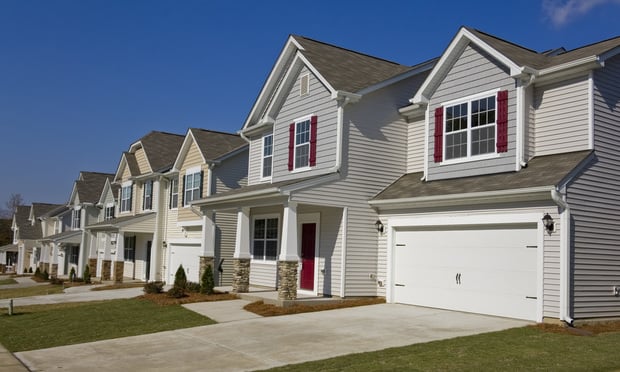How do you spot a hot real estate market overheating? An increase in distressed asset volume is a sure sign. The brokers at Kidder Mathews, the largest fully independent commercial real estate firm in the Western US, offer their views on where and what to look for and what might happen to future commercial real estate pricing expectations.
Multifamily Value-Add Turned Bad
Apartments have been a top investment target for many years, but tighter margins combined with economic headwinds have led to more investor jeopardy, especially for value-add multifamily product. There are some signals that suggest a wave of distress is incoming.
“I believe the canary in the coalmine is property liens,” says Kidder Mathews SVP Nathan Thinnes. “Vendors are usually the first to not get paid, and we’re seeing a big uptick in accrued liens, specifically in the multifamily space.”
Recommended For You
In the last decade, syndicators have caused pricing to swell to 10 times that of previous cycle lows for the value-add multifamily segment, according to Thinnes. Combine that trend with housing inflation and the greater affordability crisis, and it’s leading to evictions and a spike in vacancies. Ultimately, bad debt becomes a reality. “Coupled with much higher interest rates, high-basis operators are struggling to stay cashflow positive,” he adds.
According to Kidder Mathews VP of Research Gary Baragona, office properties currently account for nearly 50% of the total assets in distress, followed by retail at 20% and apartments at 14%, citing Real Capital Analytics data. He also notes that the third quarter exhibited the slowest rate of distressed growth since late 2022, and the cumulative value of distressed commercial real estate is “about half” of the peak totals seen in 2010.
Is the Price Right?
With the Fed’s September decision to lower interest rates, investors faced new questions about market pricing for assets. Distressed real estate adds another variable to pricing expectations between often reluctant sellers and bidders.
“There is a tremendous amount of assets, specifically commodity office product and value-add multifamily, that need to cycle through the foreclosure process that results in a lower, more manageable basis,” says Thinnes.
Kidder Mathews SVP Peter Beauchamp says that the less-than-expected distressed opportunities are, in part, a result of lenders being willing to implement loan modifications or extensions depending on asset class. “By some estimates, the banking sector has $300+ billion in near-term CRE loan maturities, and it’s uncertain how long it will take for that to filter through.” The incoming administration adds another question to the cycle, Beauchamp notes. “Will they relax regulatory restrictions, leading to further delays of these assets hitting the market?”
Randy Clemson, Kidder Mathews EVP of valuation advisory services, maintains that there is still not much distressed work on the appraisal side. However, he notes one exception: multi-tenant office and back-office buildings, the values of which have “plummeted about 75% in many cases.” Because an appraisal request by special servicers triggers a loan write-down, they don't order them “until it is absolutely necessary. The asset managers are working mostly off of broker price opinions and then extending the loans for 12 months.”
Adding further to the noise, bank lending rates are not falling with the Federal Reserve rate, and the 10-year Treasury has spiked more than 80 basis points since September 10th. This has served to keep cap rates from decreasing, points out Kidder Mathews SVP Darren Tappen.
“Any hopes borrowers have of a lower cap rate environment to aide in their workout solution is quickly fading,” says Tappen. “Good news, capital is there waiting for the re-set, as are we.”
For more insights and thought leadership from Kidder Mathews, click here.
© 2025 ALM Global, LLC, All Rights Reserved. Request academic re-use from www.copyright.com. All other uses, submit a request to [email protected]. For more information visit Asset & Logo Licensing.








